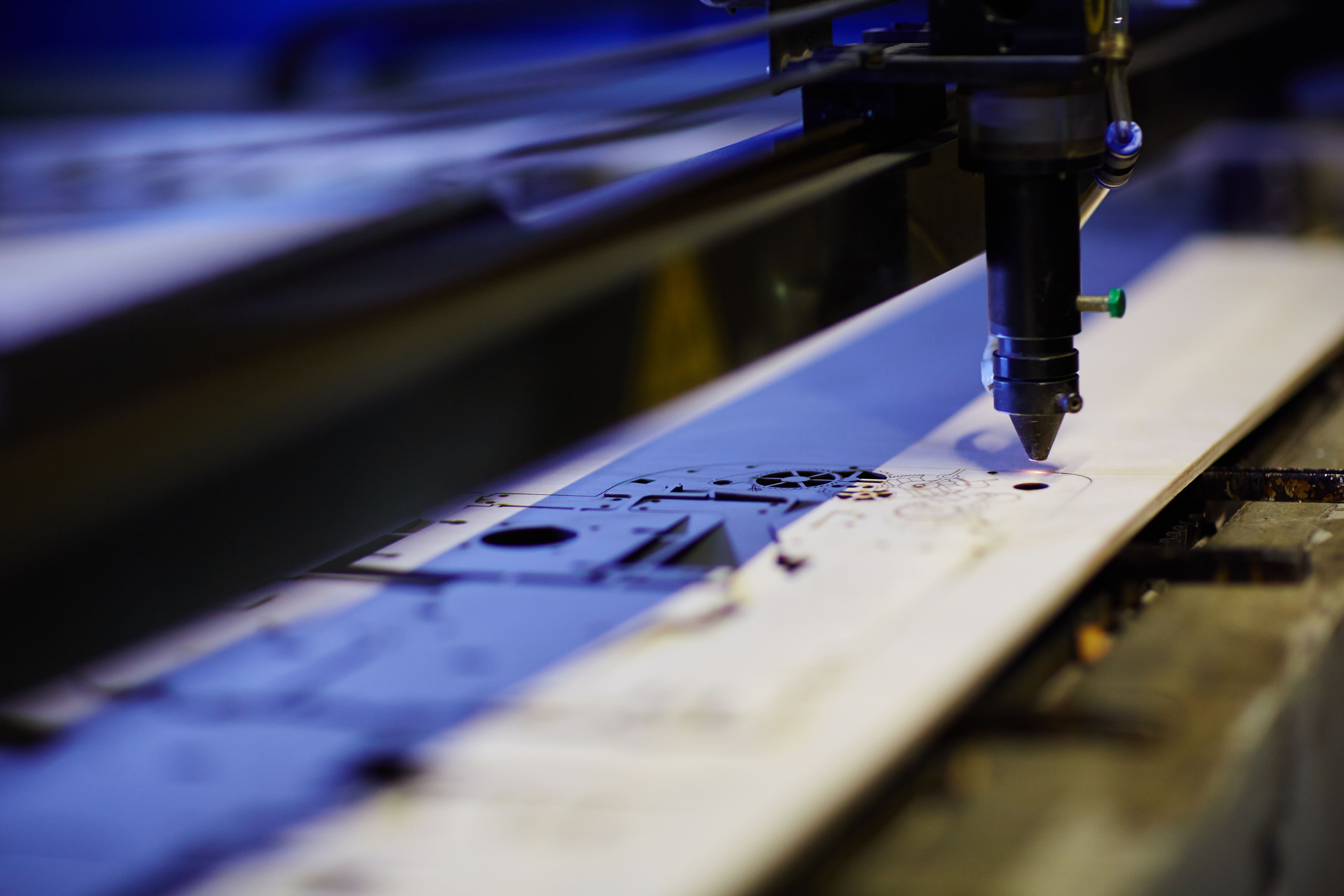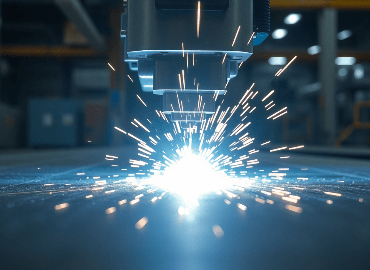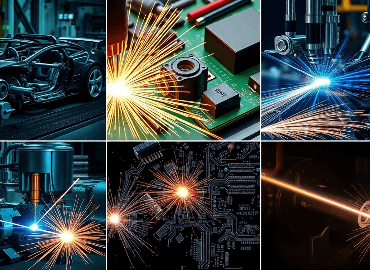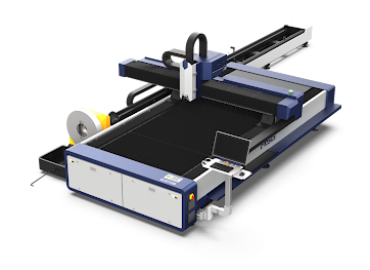In today's modern world of metal fabrication, Fiber Laser Cutting is one of the most recent developments which provides unprecedented precision, accuracy, and speed to various industries. Similar to the terms used in the metal fabrication industry, does fibre laser also sound extremely complicated to understand? So, do you wanna know what exactly fibre laser cutting means?
Well, let us explain! A fiber laser cutting machine is being widely utilized in numerous industries and it makes use of active optical fibres in order to develop a laser beam & a transport fibre to pass on to the cutting head of the machine. This laser is extremely hot and is reduced to a narrow laser beam to be further utilized for cutting through metals of multiple thicknesses.
At present, this fibre technology is utilized across a wide range of manufacturing as well as infrastructure applications because of its enhanced efficiency and power. However, different types of laser cutting machines are being utilized today and the only difference between all these machines is the way lasers are produced.
Well, we will take you through a detailed manual encompassing fibre laser cutting meaning, history, advantages, types, and much more! Let's start…
What Is Fibre Laser Cutting?
Basically, fibre laser cutting utilizes a solid-state laser in order to melt & cut through metals, which helps in achieving an efficient and clean cut. The laser medium that is used in this technology is known as optical fibres, in contrast with gas or crystal, granting fibre laser cutting its title.
A laser is a concentrated beam of light and the optical fibres utilized here help in intensifying this beam, therefore fibre is known as the "active gain medium" here that is utilized to elevate the laser to a higher power level.
Fiber laser cutting machines have the ability and proficiency to cut a myriad of substances & thicknesses relying on the capacity of the tool. Most fiber laser cutting machines are able to cut materials like stainless steel for up to 10 mm of thickness.
This type of laser cutting machine is generally utilized in the manufacturing industries because fibre laser cutting machines are enormously more costly than CO2 laser cutting machines, which often come under the budget.
What Are The Advantages Of Fibre Laser Cutting?
With a lot of benefits, it's obvious to see fibre laser cutting machines being employed by professional metal fabricators across the world in their workshops. We have listed down some of the key benefits of fibre laser cutting machines that you should know:
Fibre laser cutters have the capability of adjusting from one industry requirement to another in a smooth manner.
The best part about fiber laser cutting machines is that they can be utilized on a wide range of metals. It is the most technologically advanced form of laser cutting present today.
It comes with the advantage of low-power consumption which helps in keeping your costs low.
It has the ability to adapt according to various ranges, wavelengths as well as speeds.
Fibre lasers have proven themselves in terms of increasing efficiency with lower set up & down times.
Fibre laser machines do not pose any kind of heat threat despite having so much power.
When a comparison is drawn between fiber lasers & CO2 lasers, it functions at a faster velocity which increases the all-around efficiency.
Fiber laser machines are equipped with amazing beam quality and high power output which in turn helps in crafting a precise cutting edge.
Fibre laser cutting provides unmatched performance in the world of metal fabrication and its accuracy & precision lead to optimal results. When compared to other different types of laser cutting available in the market, fibre lasers have proved to accomplish results of much higher quality at a speedy rate and at a lower rate of consumption of substances.
Different Types Of Fibre Lasers Explained
Fiber laser cutting machines are quite a popular choice for numerous industrial cutting applications because of their speed, efficiency, and high precision. All these laser-cutting machines make use of a fibre laser source to produce a focused beam that can cut several materials. There are numerous types of fibre lasers, and each of them is designed for specific objectives. Here are some common types:
1) Pulsed Fibre Lasers
Pulsed fibre lasers are widely known for their ability to emit laser light in pulses, and this can range from nanoseconds to microseconds. Applications of pulsed fibre lasers include laser marking, material processing & micro-machining, where there is a need for controlled bursts & precision.
2) Continuous Wave (CW) Fibre Lasers
These types of lasers emit a continuous & steady output of laser light. They are normally utilized for welding, cutting, engraving, and marking in many industrial applications.
3) High-Power Fibre Lasers
High-power fibre lasers are specially designed to provide high output powers, generally more than 1 kW (kiloWatt). These types of lasers find applications in heavy-duty industrial processes such as metal welding and cutting.
4) Mode-Locked Fibre Lasers
Mode-locked fibre lasers tend to produce ultra-short pulses by locking the longitudinal modes of the laser. They are employed in various fields such as metrology, spectroscopy, and telecommunications.
5) Single-Frequency Fibre Lasers
These types of lasers emit light at a single specific wavelength or frequency, which makes them the perfect choice for applications that require stable results and narrow line widths, such as interferometry and sensing.
6) Multi-Wavelength Fibre Lasers
When it comes to multi-wavelength fiber lasers, they are able to emit multiple wavelengths at the same time. They are highly preferred and utilized in optical sensing, spectroscopy, as well as telecommunications.
7) Ultrafast Fibre Lasers
Ultrafast fibre lasers generate exceptionally short pulses in the femtosecond (fs) or picosecond (ps) range. These lasers are utilized in scientific research, precision material processing, and medical applications.
8) Raman Fibre Lasers
Raman fiber lasers make use of a nonlinear optical process, which is known as "Raman" scattering to induce laser light at distinct wavelengths. They find applications in telecommunications and spectroscopy.
9) Double-Clad Fibre Lasers
Double-clad fibre lasers do possess a unique arrangement with an inner core specifically for the laser light and an outer cladding designed for the pump light. This design entitles efficient power scaling and is generally employed in high-power fibre lasers.
10) Mid-Infrared Fibre Lasers
These mid-infrared fibre lasers operate in the mid-infrared area of the electromagnetic spectrum and find applications in sectors like military, medical, and environmental sensing.
Also, it's essential to note that manufacturers may have their own certain variations or models within the categories mentioned above, catering to diverse needs & budgets. That is why, while selecting a fibre laser cutting machine, there are some factors like the capability of cutting, types of materials, thicknesses, and precision that must be considered.
Conclusion
Ultimately, the world of fibre laser cutting machines is an intriguing and ever-evolving one, which offers a plethora of choices to cater to diverse requirements across various industries. From high-powered machines competent enough of slicing through thick metal sheets with precision to portable and compact units, too perfect for small businesses, there's a laser cutter available for everyone!
As technology goes on to advances, we can anticipate even more exhilarating developments in the domain of fiber laser-cutting machines. Whether you're an entrepreneur, metal fabrication giant, or DIY enthusiast, these laser machines carry the potential to revolutionize your creativity and productivity.
So, don't even think of missing out on the opportunity to take your important projects to greater heights and explore the endless possibilities that these laser-cutting machines offer. Now is the time to embrace the future of manufacturing and unleash your imagination with the power of fibre laser-cutting technology!
Step into the future of cutting-edge technology and begin crafting with the power of light! With Laser Technologies, explore the various types of fibre laser cutting machines, compare their features, and make an informed decision that will transform the way you create. The possibilities are limitless, and the time to act is now. Contact us if you need any kind of help!
Let Laser Technologies light your path to success!






